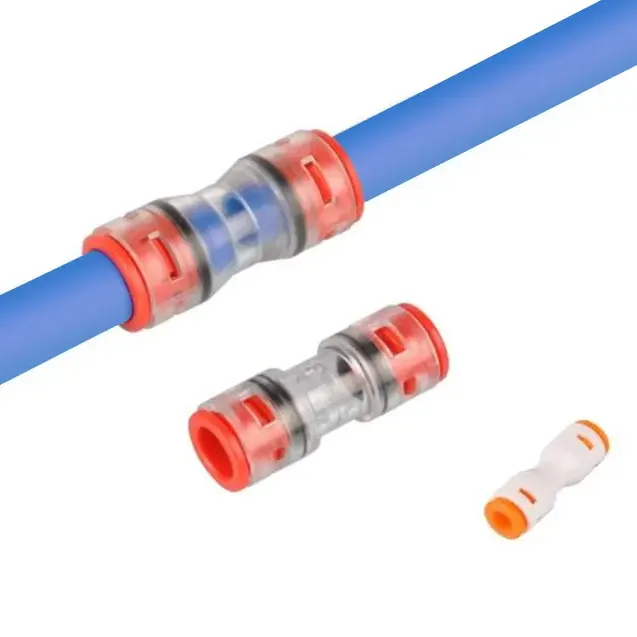What Actually Defines a Quality microduct connector in Modern Fiber Networks?
2025-11-24
Today, walk into any city utility tunnel or cell tower and you'll see hundreds of transparent conduits connecting fiber optic lines—but few understand why the design of a microduct connector determines the survival of a network. Why does a 37-cent plastic connector sink an undersea cable, while a $1.20 connector withstands a hurricane? This article will reveal the reasons.
Three Real-World Scenarios Where Connectors Dictate Project Success
1. Flooded Manhole Installations (New Orleans Case)
After Hurricane Ida, recovery crews faced submerged handholes packed with sediment. Generic microduct connectors leaked silt into pathways, blocking cables. Technicians switched to hydrostatic pressure-rated connectors with silt guards—downtime decreased by 8 days.
2. Frost Heave Zones (Minnesota Highway Fiber)
Roadside conduits fractured as clay soils froze. While splices survived, brittle connectors snapped. Replacement with thermoplastics (retaining flexibility down to -50°C) cut repair costs by $17K/mile.
3. Desert Solar Farm Micro-Ducting (Arizona ISP)
Constant thermal expansion stressed joints between buried ducts and above-ground panels. Crews adopted UV-stabilized polycarbonate connectors tolerating 200% expansion cycles—eliminating seasonal realignments.
Solving Your Microduct Connector Challenges
How to prevent dust damage to fragile fiber optic lines when installing fiber optic cables in desert areas?
Choose microduct connectors with IP68 dust caps and replaceable sealing caps. For example, BLQD's "SandShield" series uses cyclone ventilation technology; the outer coarse-particle filter captures particles larger than 0.5 mm, while the inner diaphragm blocks fine dust. Always perform a pressure test before cable installation.
Why do connectors crack when connecting metal conduits to HDPE?
Galvanic corrosion between different materials accelerates fatigue. Use dielectric isolation sleeves; insulating polymer rings prevent direct contact between metal and thermoplastic and avoid tightening torque exceeding 3 N·m.
Can existing microduct connectors withstand the emerging 220 bar fiber optic purge technology?
Most conventional connectors will fail under pressures exceeding 25 bar. If infrastructure upgrades are required, choose connectors marked "HPB compatible". These microduct connectors must undergo a rigorous 5-second burst simulation test to confirm that their inner diameter is 15% larger than the sum of the cable and pipe inner diameters.

Materials science is more important for price
Polypropylene might seem sufficient—until UV exposure turns it brittle in 18 months. Compare key material grades:
| Polymer Type | Max Temp Rating | Chemical Suitability | Lifespan Range |
|---|---|---|---|
| PP Homopolymer | 90° C (194° F) | Limited acid resistance | 5-7 years |
| PVC-U | 60° C (140° F) | Poor solvent tolerance | 8-10 years |
| Polycarbonate (Medical Grade) | 135° C (275° F) | UV stable / hydrocarbon-proof | 25+ years |



